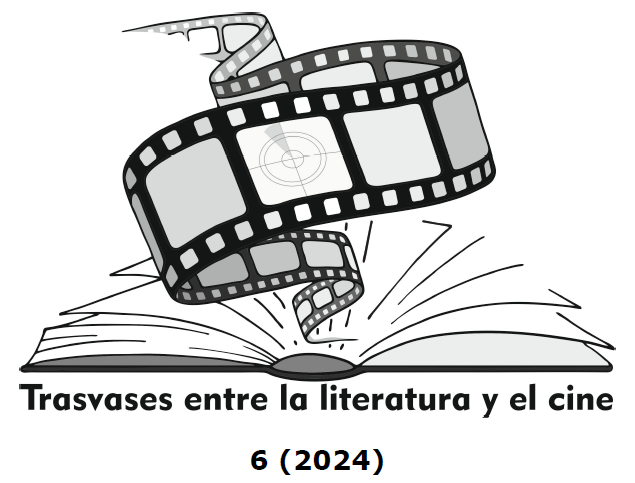A través de los ojos de Sam Gifford en El día que terminó el siglo: su visión de la II Guerra Mundial y la realizada por el cine bélico estadounidense hasta la actualidad
DOI:
https://doi.org/10.24310/tlc.6.2024.15803Palabras clave:
Francis Irby Gwaltney, Norman Mailer, Between Heaven and Hell, Los desnudos y los muertos, Richard Fleischer, Raoul Walsh, II Guerra Mundial, Batalla de LuzónResumen
Desvelamos cómo la novela The Day the Century Ended de Francis Irby Gwaltney aporta una visión tan real de la II Guerra Mundial al alejarse del enaltecimiento del ejército y mostrar una psicología de militares y políticos difícil de digerir, especialmente hoy día, por su similitud con los actuales. A través de un análisis fílmico-literario, introducimos aquí que Gwaltney pudo haberse inspirado en el también escritor Norman Mailer al crear al personaje principal de su novela, Sam Gifford, y no únicamente al concebir al soldado Bernard L. Meleski como se creía hasta ahora. Además, descubrimos de qué manera su adaptación cinematográfica logró superar la férrea censura estadounidense con un lenguaje que ni los críticos ni el ejército supieron entender.
Descargas
Métricas
Publicación Facts
Perfil de revisores N/D
Información adicional autores
Indexado: {$indexList}
-
Indexado en
- Sociedad Académica/Grupo
- N/D
- Editora:
- Universidad de Málaga
Citas
ALDRIDGE, John W. (1949), «America's Young Novelists: Uneasy Inheritors of a Revolution», Saturday Review of Literature (12/02/1949), págs. 6-8.
ALDRIDGE, John W. (1958), After the Lost Generation. Nueva York, Noonday Press.
AMERICAN FILM INSTITUTE (AFI) (2019), «Between Heaven and Hell (1956)», AFI Catalog of Feature Films – The First 100 Years 1893 – 1993, [En línea: https://catalog.afi.com/Catalog/moviedetails/51756. Fecha de consulta: 15/10/2022].
APA AMERICAN PSYCHIATRIC ASSOCIATION (2013), Diagnostic and Statistical Manual of Mental Disorders, 5th ed. Washington.
BRIGHTMAN, Carol (1994), Writing Dangerously: Mary McCarthy and Her World, Nueva York, Harcourt Brace & Company.
BRODE, Douglas (2020a), From Hell To Hollywood: An Encyclopedia of World War II Films Volume 1, Orlando, BearManor Media.
BRODE, Douglas (2020b), From Hell To Hollywood: An Encyclopedia of World War II Films Volume 2, Orlando, BearManor Media.
BROWER, Brock (1968), Other Loyalties: A Politics of Personality, Nueva York, Atheneum.
CAGE, Beverly (2022), G-Man: J. Edgar Hoover and the Making of the American Century. Nueva York, Viking Press.
CARRUTHERS, Susan (2003), «Bringing it all back home: Hollywood returns to war», Small Wars & Insurgencies, 14/1, págs. 167-182.
CHURCHILL, Winston S. (1950), The Second World War (Vol. 4): The hinge of fate, Boston, Houghton Mifflin Company.
CROWTHER, Bosley (1963), «Screen: The Grim Message of War: Foreman's 'The Victors' at Two Theaters», The New York Times (20/12/1963).
DONALD, Ralph R. (1991), «Antiwar Themes In Narrative War Films: Soldiers' Experiences As Social Comment», Studies in Popular Culture, 13/2 (1991), págs. 77-92.
EDITORIAL (1956), «UA’s ‘Attack’ Before ‘Hell’ Breaks Loose», Variety (05/09/1956), 204/1, págs. 7 y 14.
EISINGER, Chester E. (1963), Fiction of the Forties. Chicago, University of Chicago Press.
FARRIS, Coreen, SCHELL, Terry L., JAYCOX, Lisa H., BECKMAN, Robin L. (2021). «Perceived Retaliation Against Military Sexual Assault Victims», RAND National Security Research Division.
FEIGENBAUM, Lawrence H. (1950), War, as viewed by the postwar novelists of World Wars I and II, New York University [Tesis Doctoral].
GERSTLE, Frank (1956), «Screen: Battle Drama; 'Between Heaven and Hell' Bows at State», The New York Times (12/10/1956), pág. 33.
GWALTNEY, Francis Irby (1956), Between Heaven and Hell. Nueva York, Popular Library.
KELTON, Jim (2019), «Francis Irby Gwaltney (1921-1981)», CALS Encyclopedia of Arkansas [En línea: https://encyclopediaofarkansas.net/entries/francis-irby-gwaltney-3034. Fecha de consulta: 20/11/2022].
KUHN, Annette y WESTWELL, Guy (2012), «War film», en Oxford University Press (ed.), A Dictionary of Film Studies, Oxford, Oxford University Press, págs 449-450.
LENNON, J. Michael (2013), Norman Mailer: A Double Life. Nueva York, Simon and Schuster.
LOVING, Jerome (2015), «The Day the Century Ended: Francis Irby Gwaltney’s «Sequel» to The Naked and the Dead», The Mailer Review, 9/1.
MAILER, Norman (2018), Los desnudos y los muertos, Barcelona, Anagrama.
MANSO, Peter (1985), Norman Mailer: His Life and Times, New York, Washington Square Press.
MARTIN, Wesley (2020), «Combating Sexual Misconduct and Abuse of Authority in the United States Army: Same Long Fight», Dignity: A Journal of Analysis of Exploitation and Violence, 5/1.
MATTHEWS, Josh (2017), «Hacksaw Ridge: A Movie Review», Dordt College. Faculty Work: Comprehensive List. 655.
MORRAL, Andrew R., GORE, Kristie L., SCHELL, Terry L. (2015a), «Results Using the Prior WGRA Measures and Methods» en Andrew R. Morral et al. (eds.), «Sexual Assault and Sexual Harassment in the U.S. Military: Volume 2. Estimates for Department of Defense Service Members from the 2014 RAND Military Workplace Study». RAND National Security Research Division, págs. 69-76.
MORRAL, Andrew R., GORE, Kristie L., SCHELL, Terry L. (2015b), «Sexual Assault and Sexual Harassment in the U.S. Military: Volume 2. Estimates for Department of Defense Service Members from the 2014 RAND Military Workplace Study». RAND National Security Research Division.
OCLC Online Computer Library Center, Inc. (2022), «WorldCat», Dublin, Ohio.
PHILLIPS, Michael (2016a), «Can 'Hacksaw Ridge' redeem Mel Gibson?», Chicago Tribune, 06/09/2016.
PHILLIPS, Michael (2016b), «In 'Hacksaw Ridge,' Mel Gibson portrays WWII vet as a messiah, not a man», Chicago Tribune, 31/10/2016.
POLO, Elena Prado (1970), Themes and meanings in the American and Filipino novels of the Second World War in the Pacific, Michigan State University [Tesis Doctoral].
SCHLESINGER, Arthur Meier Jr. (1949), The Vital Center: The Politics of Freedom, Boston, Houghton Mifflin Harcourt.
SERLING, Rod (1963), «The Gamma Interview: Rod Serling», en Charles E. Fritch (ed.), Gamma 1: New Frontiers in Fiction, 1/1, North Hollywood, Star Press Inc., págs. 69-75.
SHAIN, Russel Eark (1976), An Analysis of Motion Pictures about War Released by the American Film Industry, 1930-1970, New York, Arno Press.
SKLAR, Robert y COOK, David A. (2023), «History of film. The war years and post-World War II trends», en The Editors of Encyclopaedia Britannica (ed.), Encyclopaedia Britannica, London, Encyclopaedia Britannica, Inc.
SLOCUM, J. David (2023), «General Introduction: Seeing Through American War Cinema» en J. David Slocum (ed.), Hollywood and War, The Film Reader, Milton Park, Taylor & Francis.
Publicado
Cómo citar
Licencia
Derechos de autor 2024 Enric Mas Aixalà

Esta obra está bajo una licencia internacional Creative Commons Atribución-NoComercial-CompartirIgual 4.0.
Aquellos autores/as que tengan publicaciones con esta revista, aceptan los términos siguientes:
- Los autores/as conservarán sus derechos de autor y garantizarán a la revista el derecho de primera publicación de su obra, el cuál estará simultáneamente sujeto a una licencia Creative Commons Reconocimento-NoComercia-Compartirigual 4.0 cuyo texto completo puede consultar en <http://creativecommons.org/licenses/by-nc-sa/4.0>
- Los autores/as podrán adoptar otros acuerdos de licencia no exclusiva de distribución de la versión de la obra publicada (p. ej.: depositarla en un archivo telemático institucional o publicarla en un volumen monográfico) siempre que se indique la publicación inicial en esta revista.
- Se permite y recomienda a los autores/as difundir su obra a través de Internet (p. ej.: en archivos telemáticos institucionales o en su página web), lo cual puede producir intercambios interesantes y aumentar las citas de la obra publicada. (Véase El efecto del acceso abierto).
Es responsabilidad de los autores/as obtener los permisos necesarios de las imágenes que están sujetas a derechos de autor.
Esta revista electrónica está editada por la Editorial de la Universidad de Málaga (UmaEditorial), siendo necesario citar la procedencia en cualquier reproducción parcial o total.








22.png)











